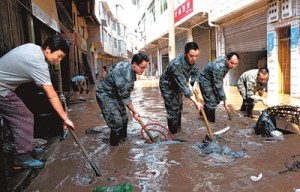
A Peek Into the Future
In the first edition of Prepare for the Worst, Plan for the Best: Disaster Preparedness and Recovery for Small Businesses (Wiley, second edition paperback, 2009), titled Contingency Planning and Disaster Recovery: a Small Business Guide (Wiley, 2002), I wrote to explain how, in the aftermath of a major disaster, insurance premiums rise. However, large corporations eventually reach their threshold for pain and adopt self-insurance, captive and other programs to reduce their costs (p. 171):
Large corporations will become increasingly unwilling to pay such steep insurance premiums and will develop innovative means of insuring their risks. We have seen this phenomenon before, beginning in the 1980’s with the development of the so-called alternative risk transfer market (ART). ART offered a portfolio of tools by which corporations could transfer their risks by means other than standard commercial insurance programs. One such tool is a captive insurance program whereby large corporations insure their own risks through wholly owned insurance companies. They were typically domiciled offshore, in places such as Bermuda and the Cayman Islands, to benefit from the favorable tax treatment and fewer regulations. Captives allow corporations the benefit of tax-deductible premiums to cover their risks while ensuring that profits on the program remain in-house.
Now, some interesting news from Vermont, the leading jurisdiction with laws friendly to establishing U.S. captive insurers. In the first six months of this year, Vermont licensed 17 new captives, with a great deal of interest reported by hospital groups seeking coverage for their professional medical liabilities and financial services companies that face premium increases for their directors and officers liability coverage.
Many market analysts believe that this is a defensive measure in anticipation of further premium increases, in which case the insurance market, where small businesses have relatively little bargaining power, is about to get tougher for us. As I am an optimist, I would like to believe that as demand declines in the traditional market, as large corporations self-insure through captives, we will benefit from declining premium rates. Indeed, that it what I had argued in the first edition of the book. Unfortunately, the world changed with the 2008 banking crisis. I am with the market analysts on this one; I predict rising insurance rates, so if you have an opportunity to lock in coverage now for a multi-year period, it would probably pay to do so.







